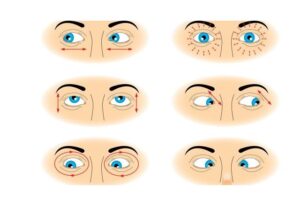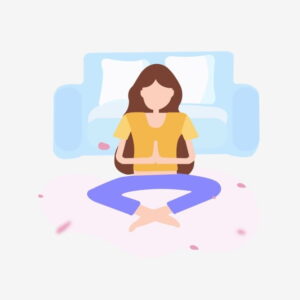Author: Amanda James
The Power of Pranayama
Compassion and the Yoga Sutras
- Strengthen your compassion “muscles” by writing down all the ways you behaved compassionately each evening before bed.
- Notice how often during the day you judge yourself. When a judgmental thought pops up, purposefully replace it with a compassionate thought (like “I’m doing my best right now”).
- Show compassion to your colleagues, family, and fellow students by keeping their health, safety, and mental well-being in mind.
Make Mindfulness a Habit
- promote empathy
- enhance self-compassion
- decrease stress and anxiety
- improve general quality of life
Your Inner Smile
An Ayurvedic teacher once said, “An illness is a function of the loss of the inner smile.” What is the inner smile? Where is it, exactly? And, if it is so important to health, how do we do it? How do we maintain our inner smile, even when our outside world may not be such a nice place?
According to the yoga master, Aadil Palkhivala, the inner smile lies deep in your Heart Center and only emerges when you truly feel connected with all things. Your inner smile is your bliss; your calm inner state, formed by your knowledge of connectedness. It is the feeling of true love, but not in the passionate or sentimental sense. No one and no event can bring you bliss, just as no one and no event can take away your inner smile. Your inner smile is a choice – do you choose to connect to your heart and soul, or do you choose to let your circumstances push you around?
One way to choose bliss is to practice Smiling Breath. Your breath is physically the closest you can get to your inner world. To develop Smiling Breath, smile from within on your inhales. In other words, smile with your eyes and heart (and lips) as you breathe in all that is good. Feel light and full. Then, on the exhale, calm your mind, focusing only on the feeling of breath on your upper lip. Repeat several times, smiling on the inhale and focusing on the exhale. In this way, you program your subconscious to link the sensation of breath with bliss. So even in the busy-ness of daily life, each of your breaths will remind you of your inner smile. With each breath, you choose bliss.
The real challenge to finding your inner smile comes during times of grief. Being connected to your Heart Center and knowing that bliss is a choice is a good start, but sometimes it takes more physical effort to smile (on the inside or the outside). One way to lift yourself out of anger or sadness is to actually lift your arms overhead. When you are upset, what does your body do? Clench up and pull inward – chest collapsing, fists squeezing, shallow breathing. Your body physically holds grief in your upper torso. So throw your arms up, open your armpits and chest. Do you notice that this posture looks a lot like someone celebrating? It’s not a coincidence! Lifting your arms has always been a joyous gesture. Back bends and twists also open the chest, giving your lungs more room to practice your Smiling Breath.
Your inner smile is always in there. Begin to notice it and practice finding it so you can enjoy your bliss, regardless of the circumstances and people surrounding you.
Tap. Tap. Tapping.
Sweet Dreams
- Sleep efficiency
- Total sleep time

- Total wake time
- Sleep onset latency (the amount of time it takes to fall asleep)
- Wake time after sleep onset
- 1 cup organic milk (cow, soy, almond, rice, cashew, oat, etc.)
- 1 spoonful Ghee (clarified butter) – you can make this yourself or buy it at some grocery stores
- Maple syrup, to taste
- A pinch or two of each spice, to taste:
- Turmeric
- Nutmeg
- Cinnamon
- Ground cloves
Yoga for Your Eyes
 If you are like most of us these days, you’ve probably had enough screen time! Zoom meetings, virtual happy hours, distance learning, Netflix binges… We need a tech time-out for the health of our eyes!
If you are like most of us these days, you’ve probably had enough screen time! Zoom meetings, virtual happy hours, distance learning, Netflix binges… We need a tech time-out for the health of our eyes!Mind Full or Mindful?
At Ease. At Home.
 We’ll be the first to admit – venturing into the world of digital, streaming yoga classes is daunting! Hours of research, shopping, and trial-and-error, plus the patience of our students and flexibility of our teachers have come together in the creation of our “new normal”. And while it was a bit awkward at first and there are still a few technical glitches, we think Y4A has created a strong schedule of classes to keep you mentally and physically healthy. We hope you think so, too!
We’ll be the first to admit – venturing into the world of digital, streaming yoga classes is daunting! Hours of research, shopping, and trial-and-error, plus the patience of our students and flexibility of our teachers have come together in the creation of our “new normal”. And while it was a bit awkward at first and there are still a few technical glitches, we think Y4A has created a strong schedule of classes to keep you mentally and physically healthy. We hope you think so, too!- Props: Most of us don’t have bolsters and blocks at home but never fear! Use a necktie, bathrobe strap, towel or scarf for a strap. Grab a footstool, box of wine, or duct tape a stack of books together for a block. Blankets, pillows, and towels work for bolsters. Don’t have a yoga mat? No problem! Practice on your carpet for a bit of cushion. Take one of your single socks (crew or knees socks work best) and fill it about 1/3 full of rice, tie a knot at the top and you’ve got an eye pillow for savasana. Pro-tip: keep it in the freezer for a cooling experience as the days get hotter.
- Environment: You can create the experience you want! Looking for a mini-vacation during your practice? Play some Hawaiian music in the background and light a pineapple scented candle. Need to blow off some steam? Crank loud music. You are in control of the room’s temperature, lighting, ambience…it’s truly a personalized experience! Wear your usual yoga clothes, stay in pajamas, rock your robe. It is totally private because no one else in class can hear you and you can choose to turn off your camera, too! And pets! Your pets are invited to join you for the class, or maybe just for a post-savasana cuddle session.
- Instruction: Often in studio classes, your teachers wander the room, adjusting students’ postures and observing the class. In the streaming classes, the teachers are usually moving through the postures right with you so you can really see how the teacher adapts his/her own practice in real time. Our instructors have also tightened up their instructions and cues to keep you safe and strong from a distance.


